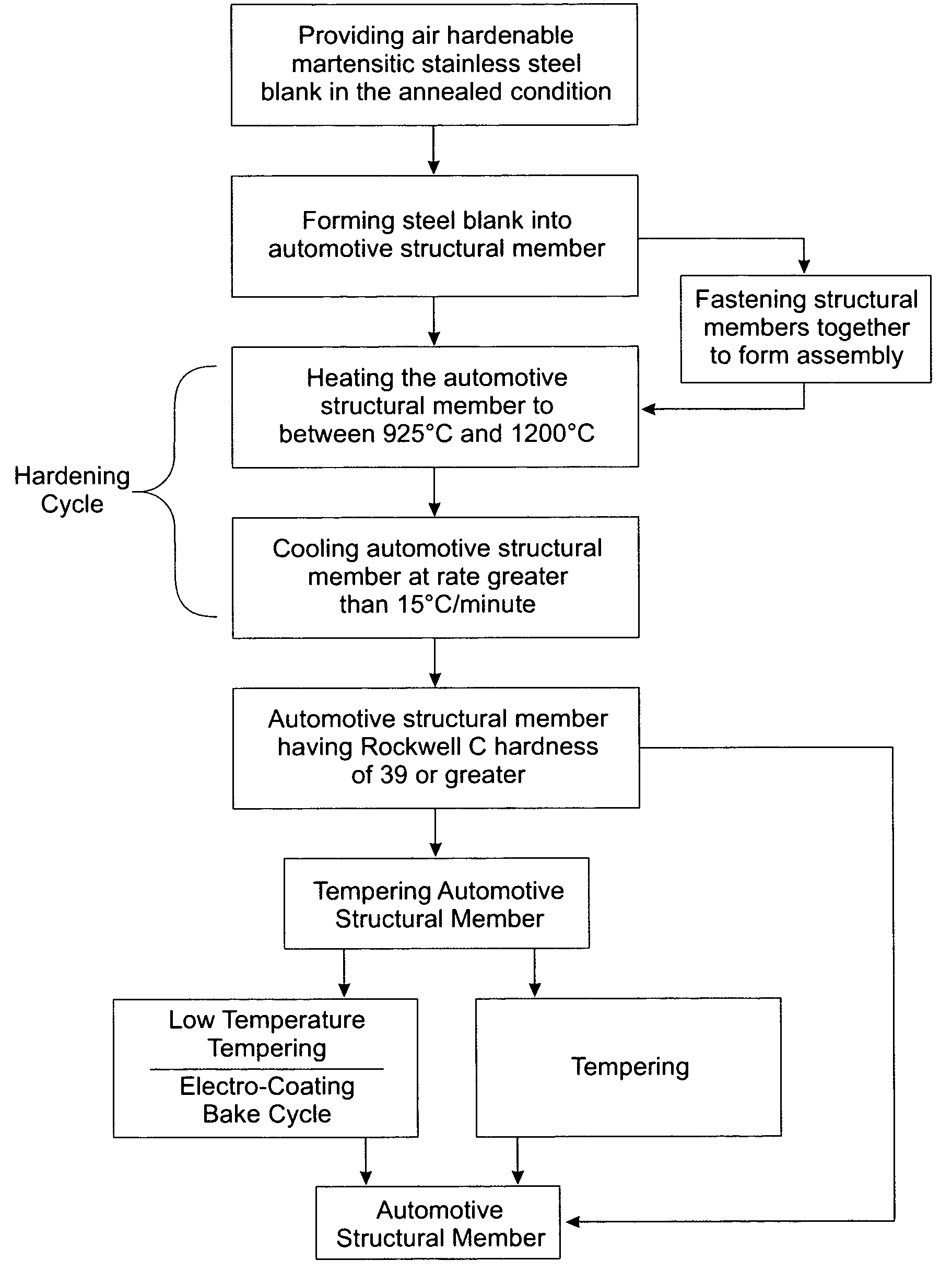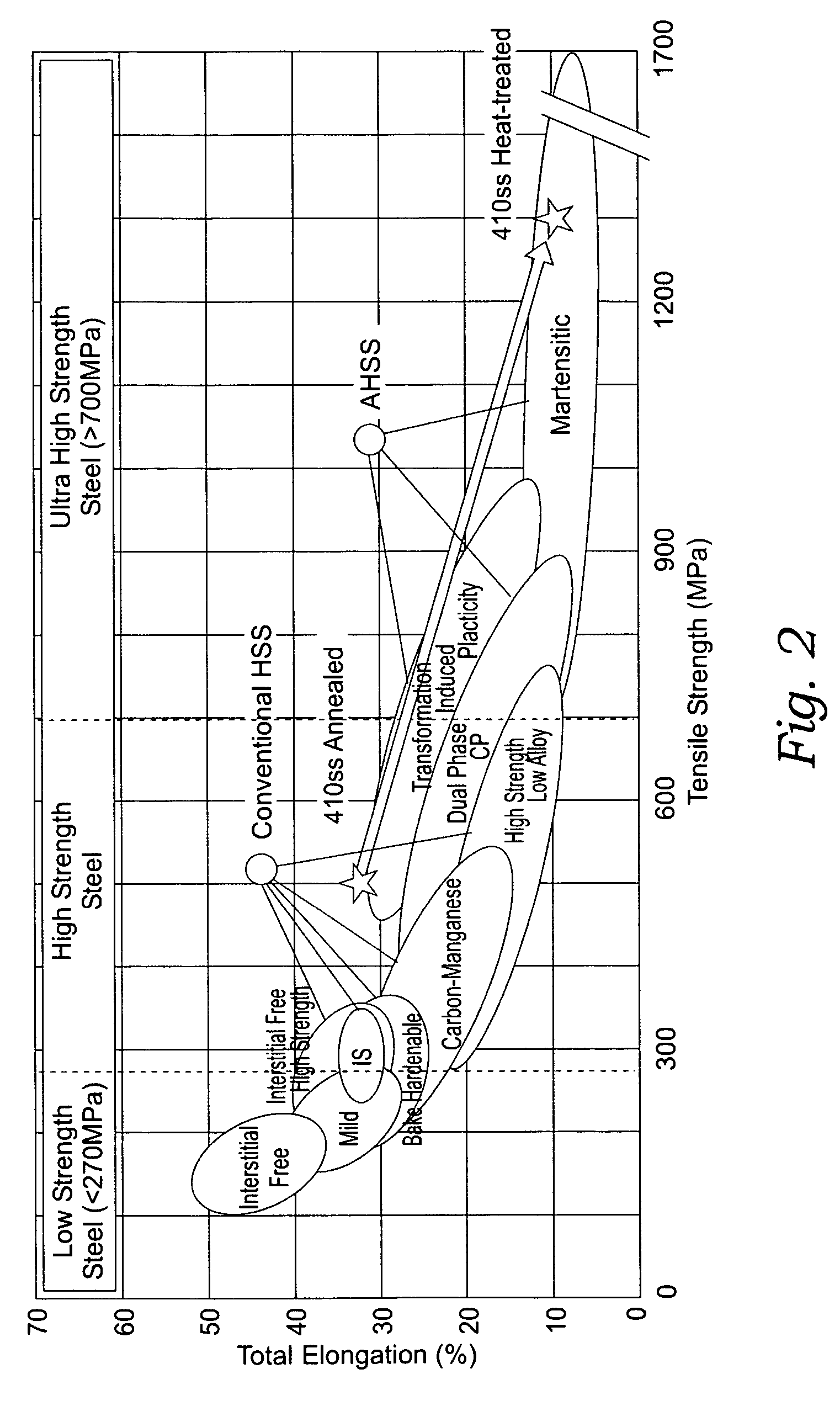Method for manufacturing automotive structural members
a technology for structural components and manufacturing methods, applied in the field of automotive structural components, to achieve the effects of improving ductility, reducing brittleness, and increasing ductility
- Summary
- Abstract
- Description
- Claims
- Application Information
AI Technical Summary
Benefits of technology
Problems solved by technology
Method used
Image
Examples
Embodiment Construction
[0037]While the present invention is susceptible of embodiment in its various forms, there is shown in the drawings and will be hereinafter be described the presently preferred embodiments of the invention with the understanding that the present disclosure is to be considered as exemplifications of the invention and it is not intended to limit the invention to the specific embodiments illustrated.
[0038]As illustrated in FIGS. 4-6, the present invention is directed to a method of manufacturing automotive structural members. The method of manufacturing automotive structural members is particularly useful for fabricating automotive pillars, sub-frames, cross beams, frame rails, frame brackets, roof rails, seat frames, door beams, bumper beams, control arms, wheels, instrument panel reinforcements, running boards, roll-bars, tow hooks, bumper hitches, and roof racks. In accordance with the invention, air hardenable martensitic stainless steel, preferably of types 410, 420 or 440, is pro...
PUM
| Property | Measurement | Unit |
|---|---|---|
| temperature | aaaaa | aaaaa |
| temperature | aaaaa | aaaaa |
| temperature | aaaaa | aaaaa |
Abstract
Description
Claims
Application Information
 Login to View More
Login to View More - R&D
- Intellectual Property
- Life Sciences
- Materials
- Tech Scout
- Unparalleled Data Quality
- Higher Quality Content
- 60% Fewer Hallucinations
Browse by: Latest US Patents, China's latest patents, Technical Efficacy Thesaurus, Application Domain, Technology Topic, Popular Technical Reports.
© 2025 PatSnap. All rights reserved.Legal|Privacy policy|Modern Slavery Act Transparency Statement|Sitemap|About US| Contact US: help@patsnap.com



